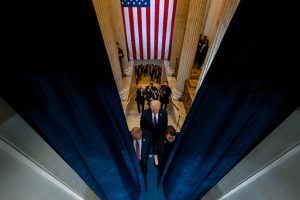Southeast Asian investors, once among the most cautious stock market players, are now turning to high-risk investments amid the pandemic, according to a study by investment bank Schroders.
More than a third of people will allocate more towards high-risk investments, even as most will allocate more to savings or low-risk investments.
Zero or negative interest rates incentivise risky investing for more than half of respondents and many are putting money into higher-risk asset classes for the first time in pursuit of returns.
The risk-focused findings of the study, which surveyed nearly 24,000 people from Indonesia, Malaysia, Singapore and Thailand, showed that 40% of people from these markets (versus 37% globally) were more willing to allocate to high-risk asset investments.
The results indicate that many people feel compelled to take on greater risks to compensate for Covid-19 uncertainty and concerns caused by rising inflation.
In Southeast Asia, this was more pronounced in Thailand (42%), followed by Indonesia (40%), Singapore (40%) and Malaysia (38%).
Focused on Niche Sectors
Confronted with zero or negative interest rates, 56% of the Southeast Asian respondents (versus 53% globally) said they would make higher-risk investments which include stocks of funds focused on niche sectors in pursuit of returns.
The study found 46% of Southeast Asian investors (versus 33% globally) would also look to invest in high-risk growth cryptocurrencies.
This high-risk appetite is despite 68% of Southeast Asian investors (versus 63% globally) stating that investment performance affects their mental health.
 “Our research indicates that many people feel they now have to take on more risk in pursuit of returns given the current pandemic,” said Lesley-Ann Morgan, head of multi-asset strategy at Schroders in London, pictured left.
“Our research indicates that many people feel they now have to take on more risk in pursuit of returns given the current pandemic,” said Lesley-Ann Morgan, head of multi-asset strategy at Schroders in London, pictured left.
“The challenging economic conditions that we have seen over the past year have likely played a part in this. Amid the low interest rate environment, riskier investment choices have unsurprisingly become more compelling.”
While most younger investors aged 18-37 globally would invest in higher-risk assets to pursue greater returns in a low or negative interest rate scenario, a different trend is seen in Southeast Asia where different age groups show varying appetites for high-risk investments.
Older Thais Take on Risk
Malaysian investors in the 38-50 year age bracket are more likely to invest in high-risk assets, whereas younger investors in Indonesia and Singapore, and older generation of investors in Thailand are the ones more willing to take on risk.
On a wider regional perspective, 59% of investors in Asia were most likely to make higher-risk investments under low interest rate conditions, ahead of those based in the Americas (53%) and Europe (49%).
New and emerging sectors form part of the top few types of investments that people have made for the first time over the past year.
Electric vehicle stocks, as well as cryptocurrencies, are jointly ranked first (28%), biotech or pharma funds are third (26%), while internet and tech stocks are in fourth position with 25%.
Overall, in the past year, most investors in Southeast Asia have shown high interest in internet and technology stocks (63%) but the high rate of investment in precious metals (60%) shows that their outlook is not necessarily bullish.
A further 59% of them are interested in real estate investments.
- George Russell
READ MORE:
China Developers Flag Risks After Sharp Share Price Rebound
China Securities Regulator To Resolve Bond Default Risks
China Property May Still Expose Risks Hidden by Global Liquidity
























